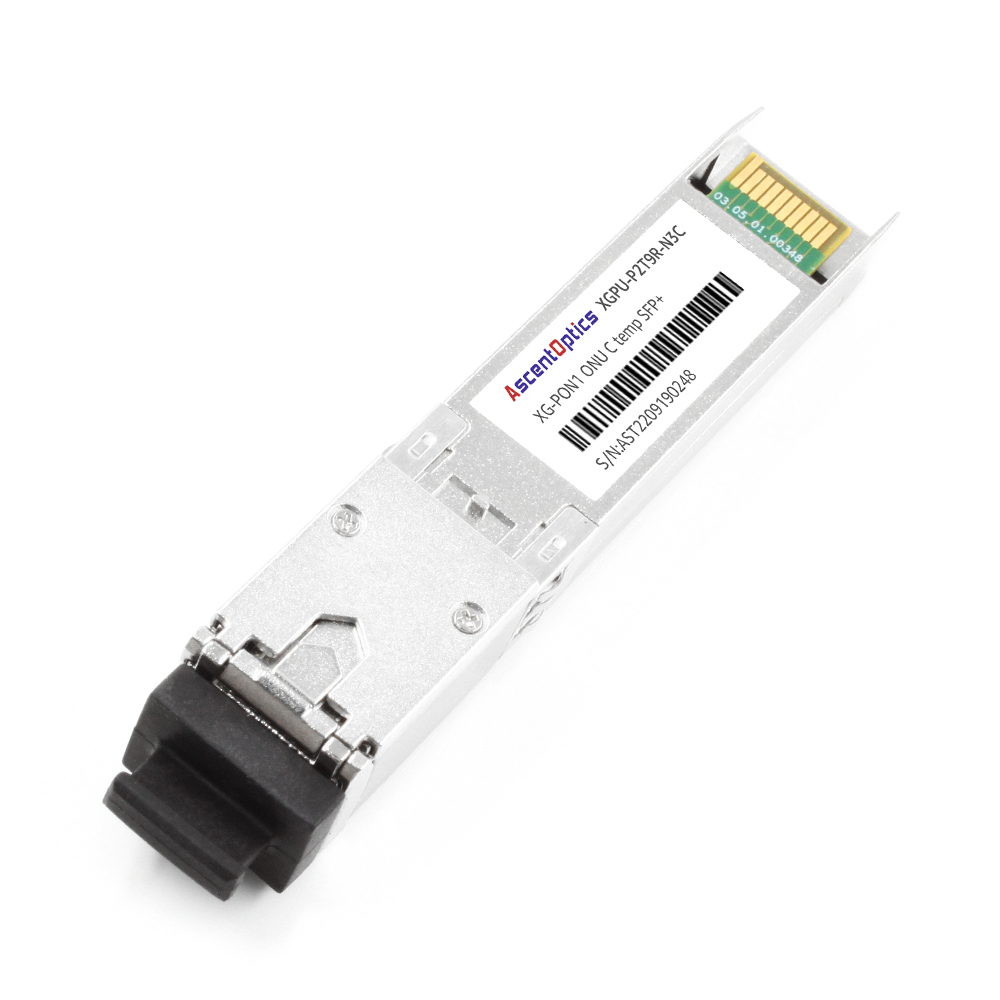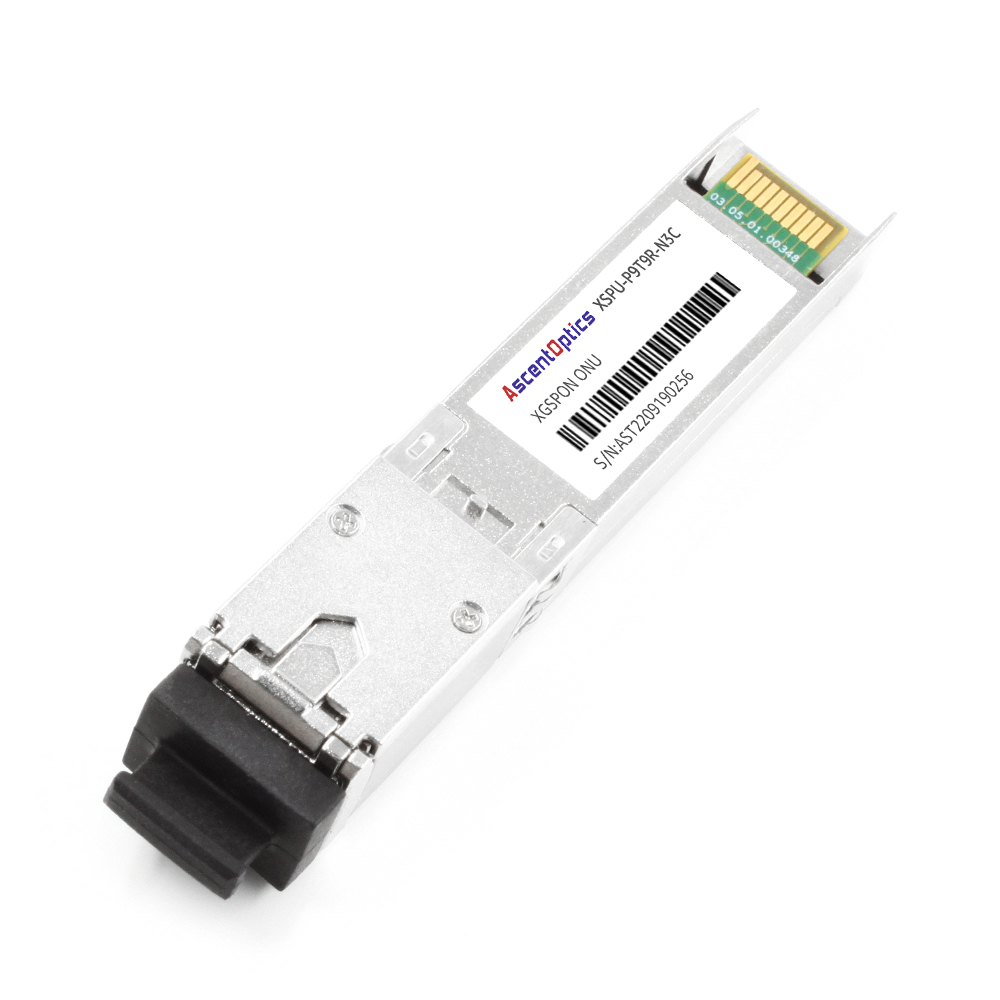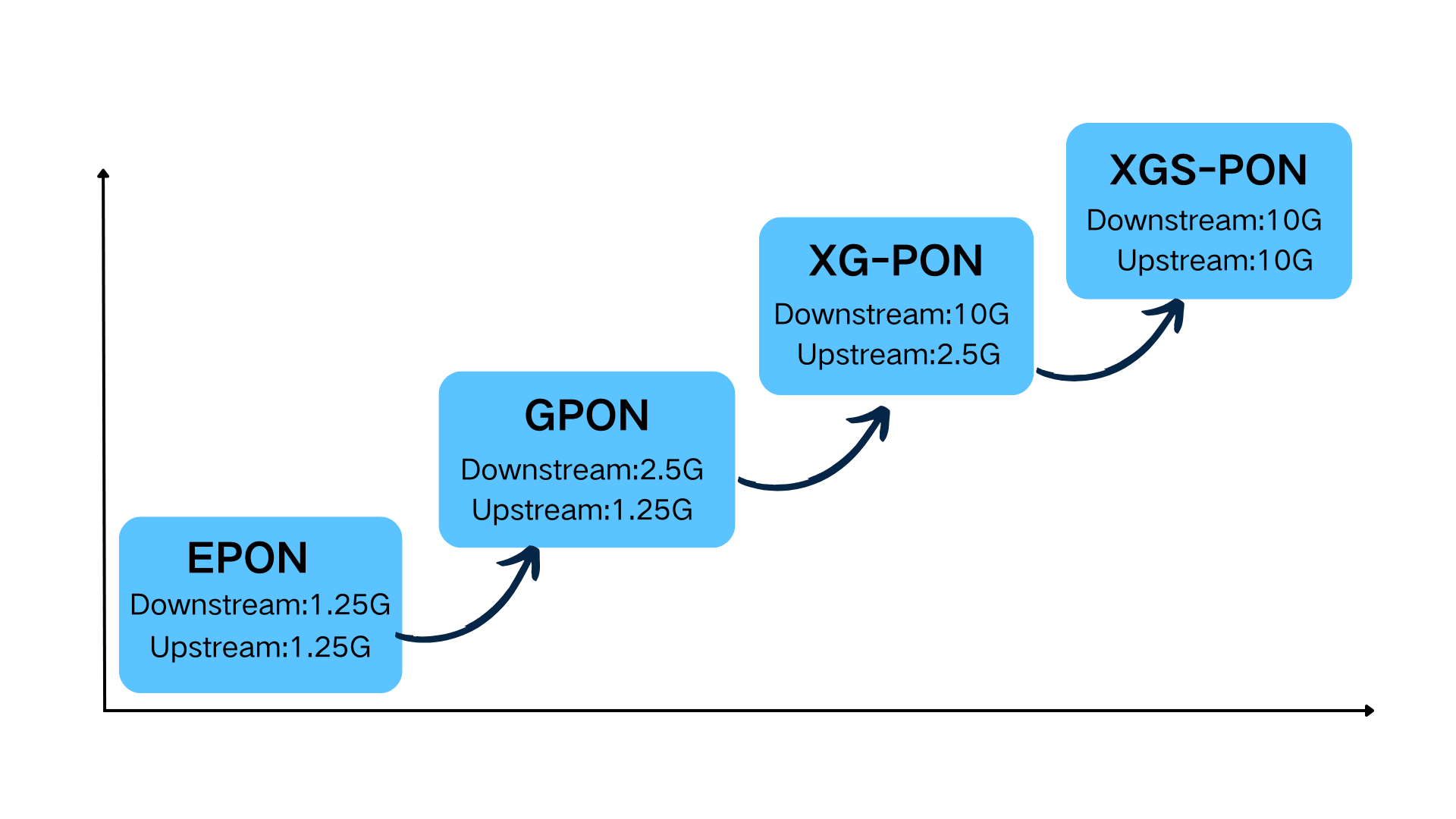Passive Optical Networks (PON) have revolutionized broadband delivery by providing efficient, high-speed fiber-optic connectivity without the need for active components between the provider and the end user. PON technologies leverage optical splitters to distribute signals, making them cost-effective and scalable for delivering internet, voice, and video services. As demand for bandwidth-intensive applications like 4K streaming, cloud computing, and IoT grows, PON technologies have evolved to meet these needs, with GPON, XG-PON, and XGS-PON being the primary standards in use today.
The rapid rise in data consumption, driven by remote work, online gaming, and smart city initiatives, has pushed Internet Service Providers (ISPs) and enterprises to upgrade their network infrastructure. Each PON generation—GPON, XG-PON, and XGS-PON—offers distinct advancements in speed, capacity, and flexibility, enabling providers to meet diverse user demands while maintaining cost efficiency. Understanding these technologies is critical for making informed decisions about network upgrades.
GPON (Gigabit Passive Optical Network), standardized under ITU-T G.984.x, is a widely adopted PON technology for Fiber-to-the-Home (FTTH) and other FTTx deployments. It delivers a downstream bandwidth of 2.488 Gbps and an upstream bandwidth of 1.244 Gbps, shared across multiple users via optical splitters.
GPON is known for its high bandwidth, interoperability, and efficiency. It supports split ratios of up to 1:128, allowing a single optical fiber to serve multiple endpoints, reducing infrastructure costs. Its robust manageability and compatibility with existing optical distribution networks (ODNs) make it a popular choice for ISPs.
GPON is ideal for residential broadband services, supporting applications like high-definition video streaming, online gaming, and basic cloud services. Its asymmetric bandwidth suits environments where downstream traffic significantly exceeds upstream needs.

XG-PON (10-Gigabit Passive Optical Network), defined by ITU-T G.987.x, is the next step in PON evolution. It provides a downstream bandwidth of 10 Gbps and an upstream bandwidth of 2.5 Gbps, offering a significant leap in performance over GPON.
The asymmetric nature of XG-PON, with a fourfold increase in downstream speed compared to GPON, makes it well-suited for scenarios with heavy download demands. It maintains the same split ratios (up to 1:128) and transmission distances (up to 20 km) as GPON but with enhanced capacity.
XG-PON is ideal for residential and small business applications requiring high-speed downloads, such as 4K/8K video streaming, virtual reality (VR) gaming, and content delivery networks. Its ability to coexist with GPON on the same ODN allows for seamless upgrades without replacing existing infrastructure.

XGS-PON (10-Gigabit Symmetrical Passive Optical Network), standardized under ITU-T G.9807.x, delivers symmetrical 10 Gbps bandwidth for both downstream and upstream traffic. This represents the latest advancement in PON technology, addressing the growing need for balanced data transfer.
Unlike the asymmetric XG-PON, XGS-PON’s equal upstream and downstream speeds make it a future-proof solution for bandwidth-intensive applications. It supports the same split ratios and transmission distances as GPON and XG-PON, ensuring compatibility with existing ODNs.
XGS-PON is tailored for enterprise applications, including cloud computing, real-time data backups, video surveillance, and collaborative platforms requiring significant upstream bandwidth. It also supports residential users with symmetric needs, such as content creators and smart home ecosystems.

| Parameter |
GPON (ITU-T G.984) |
XG-PON (ITU-T G.987) |
XGS-PON (ITU-T G.9807) |
| Standardization Time |
2004 |
2010 |
2016 |
| Downstream Rate |
2.488 Gbps |
10 Gbps |
10 Gbps |
| Upstream Rate |
1.244 Gbps |
2.488 Gbps |
10 Gbps |
| Wavelength |
Downlink:1490 nm |
Downlink:1577 nm Uplink:1270 nm |
Downlink:1577 nm Uplink:1270 nm |
| Split Ratio |
1:64 (Max 1:128) |
1:64 (Max 1:256) |
1:64 (Max 1:256) |
| Transmission Distance |
≤20 km |
≤20 km |
≤20 km |
| Modulation Type |
NRZ |
NRZ |
NRZ (Scalable to PAM4) |
| Typical Applications |
Home Broadband、IPTV |
Enterprise Dedicated Line、4K/8KVideo |
5G Fronthaul、Cloud Services、Symmetric Dedicated Line |
(1) Data Rate and Symmetry
GPON: Asymmetric bandwidth (Downlink 2.5G / Uplink 1.25G), suitable for downlink-heavy applications such as home internet access and video-on-demand.
XG-PON: Downlink 10G / Uplink 2.5G, meets high-bandwidth demands of enterprises, but the uplink remains a bottleneck (e.g., video surveillance backhaul).
XGS-PON: Symmetric 10G bandwidth, resolves uplink bottlenecks, ideal for live streaming, cloud storage, and 5G fronthaul scenarios.
(2)Split Ratios and Transmission Distances
All three technologies support split ratios up to 1:128 and transmission distances up to 20 km. However, XG-PON and XGS-PON offer higher efficiency in bandwidth allocation, supporting more users at higher speeds.
(3)Performance and Efficiency
GPON is sufficient for basic broadband needs but struggles with emerging high-bandwidth applications. XG-PON improves downstream performance, while XGS-PON’s symmetrical bandwidth ensures optimal performance for both uploads and downloads, making it ideal for modern networks.

GPON is the most cost-effective due to its widespread adoption and mature ecosystem. XG-PON requires moderate investment for upgrades, while XGS-PON, with its advanced capabilities, involves higher initial costs but offers long-term scalability. Coexistence strategies mitigate costs by leveraging existing infrastructure.
| Dimension |
GPON |
XG-PON |
XGS-PON |
| OLT Cost |
Lowest (Mature Industry Chain) |
Higher (Optical modules ~20% more expensive) |
Highest (Due to symmetric rate requirements) |
| ONU Cost |
¥100–200 |
¥300–500 |
¥500–800 |
| ODN Upgrade |
No upgrade required |
No upgrade required |
No upgrade required |
| Application Scenarios |
Home broadband, rural coverage |
Enterprise leased lines, 4K video |
5G fronthaul, cloud data centers |
Shared Downstream Wavelength
XGS-PON and XG-PON share the same downstream wavelength (1577 nm), enabling seamless coexistence. The Optical Line Terminal (OLT) broadcasts downstream data, and Optical Network Units (ONUs) filter relevant signals, ensuring efficient data delivery.
Upstream TDMA Mechanism
Upstream transmission uses Time Division Multiple Access (TDMA), with XG-PON ONUs transmitting at 2.5 Gbps and XGS-PON ONUs at 10 Gbps. The OLT dynamically allocates time slots, allowing both technologies to operate on the same ODN without interference.
Combo Solution and WDM Combiner
Coexistence between XGS-PON and GPON requires a Combo solution integrating GPON and XGS-PON optical modules with a Wavelength Division Multiplexing (WDM) combiner. The WDM separates upstream signals (1310 nm for GPON, 1270 nm for XGS-PON) and multiplexes downstream signals (1490 nm for GPON, 1577 nm for XGS-PON).
Three-Mode vs. Two-Mode Combo Modules
The Three-Mode Combo Optical Module supports GPON, XG-PON, and XGS-PON ONUs, while the Two-Mode Combo supports only GPON and XG-PON. The Three-Mode module offers greater flexibility for mixed deployments, enabling gradual upgrades.
Benefits of Coexistence for Network Upgrades
Coexistence minimizes disruption by allowing ISPs to deploy next-generation PON technologies on existing ODNs. This preserves investments in fiber infrastructure while enabling incremental upgrades to meet growing bandwidth demands.
When selecting a PON technology, ISPs and enterprises must evaluate bandwidth requirements, user density, and budget constraints. GPON suits basic residential needs, XG-PON supports high-downstream applications, and XGS-PON is ideal for symmetric, high-capacity networks.
Residential users benefit from GPON and XG-PON for cost-effective, download-heavy services. Enterprises, with demands for cloud services, video conferencing, and data backups, require XGS-PON’s symmetrical bandwidth to ensure performance.
XGS-PON’s 10 Gbps symmetrical speeds and compatibility with existing infrastructure make it a future-proof choice. Its ability to handle emerging technologies like 5G backhaul and IoT ensures long-term relevance.
GPON offers reliable, cost-effective broadband for residential use. XG-PON enhances downstream capacity for streaming and gaming, while XGS-PON provides symmetrical 10 Gbps speeds for enterprise and advanced residential applications. Each technology addresses specific needs, with coexistence strategies enabling smooth transitions.
As digital demands grow, ISPs and enterprises must adopt scalable PON technologies to remain competitive. XGS-PON’s symmetrical bandwidth and coexistence capabilities position it as the optimal choice for future-proof networks, balancing performance and cost efficiency.